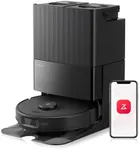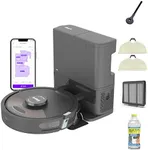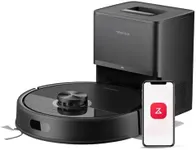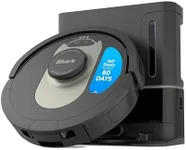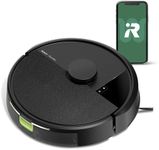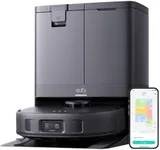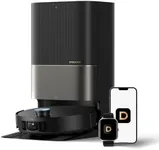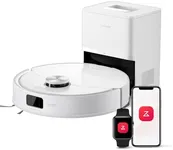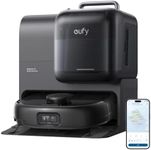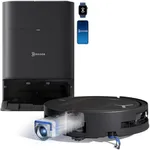Buying Guide for the Best Robot Vacuums
When shopping for a robot vacuum, it's helpful to think about your cleaning needs and your living space. Robot vacuums can save you time and effort, but their effectiveness depends on matching the features to your home: things like the floor types you have, the amount of clutter, and the frequency of pet hair or dust. Consider how much maintenance and setup you’re comfortable with, and think about how much you want to interact with your vacuum — some are ‘set and forget’, while others let you control everything from your phone.Suction PowerSuction power measures how strongly the robot can pull in dirt and debris. This spec is important because it affects how well the vacuum picks up dust, crumbs, and especially heavier particles like sand or pet hair. Suction power is often given in Pascals (Pa). Lower suction (around 1000 Pa or below) is generally fine for light dust and hard floors, while mid-range suction (1500–2000 Pa) is suitable for homes with occasional pet hair or thin rugs. High suction (2000 Pa and above) is best for thicker carpets or lots of pet hair. Think about your floor types and usual mess — for mainly hard floors with little debris, lower power is fine, but if you have pets or carpet, aim higher.
Navigation SystemThis refers to how the robot moves around and avoids obstacles. Good navigation helps the vacuum clean more thoroughly and prevents it from getting stuck. Basic systems bump into things and use random patterns, which can miss spots or take longer. Advanced robots use sensors, cameras, or lasers to map rooms and clean methodically, avoiding furniture and stairs. If your space is simple or you don’t mind some missed areas, a simple system is okay. For larger or more complex homes, or if you want efficient, complete cleaning, a mapping or smart navigation system is best.
Battery LifeBattery life tells you how long the vacuum can work on one charge. This is especially important for larger homes or if the robot needs to clean several rooms in one run. Shorter runtimes (under 60 minutes) suit small apartments or focused spot cleaning. Mid-range (60–100 minutes) works for most average-sized homes, while high-end models (over 120 minutes) are best for large houses or multiple rooms. If your home is bigger, look for longer battery life to avoid interruptions. Also, some robots can return, recharge, and resume — a good feature for big spaces.
Dustbin CapacityDustbin capacity is about how much dirt the vacuum can hold before it needs emptying. A larger dustbin means fewer trips to the trash can, which is useful if your home accumulates lots of dirt or pet hair. Small bins (less than 0.4 liters) will need frequent emptying, especially in larger or dirtier homes. Average sizes (0.4–0.6 liters) fit most people’s needs, while larger bins (over 0.6 liters) are good for big houses or people who want less maintenance. Choose based on your cleaning frequency and how much dirt your floors attract.
Floor Type CompatibilityNot all robot vacuums work equally well on every floor type. Some excel on hard floors but struggle on thick carpets. Manufacturers often specify what floor their robot is best for. For mostly hard floors (wood, tile, laminate), most vacuums will do well. If you have lots of carpet, look for models with higher suction and brush systems designed for deeper cleaning. Mixed floor homes should look for a vacuum that can automatically adjust to different surfaces, or at least has features for both.
Smart Features and App ControlThese cover things like Wi-Fi connectivity, app controls, voice assistant compatibility, scheduling, and virtual barriers. Smart features make it easier to control and monitor your vacuum remotely, set cleaning schedules, or limit cleaning to certain areas. If you want convenience, love automation, or prefer controlling devices from your phone or via voice, look for these features. If you’re more hands-off or just want basic cleaning, you can skip these extras.
Noise LevelNoise level, usually measured in decibels (dB), tells you how loud the vacuum gets during operation. If you’ll be home while it cleans or have pets that are sensitive to sound, quieter models (under 60 dB) are more comfortable. Standard models run around 65–70 dB, which is similar to normal conversation. For mainly nighttime or low-disruption use, lower dB is better; if noise isn’t a concern, standard models are fine.
Maintenance RequirementsEvery robot vacuum needs some maintenance, like emptying the dustbin or cleaning filters and brushes. Some models are designed for low maintenance, with self-emptying bins or easy-clean parts, while others require frequent manual attention. Consider your willingness to do regular cleaning tasks — if you want minimal effort, look for self-cleaning or easy-maintenance features.

